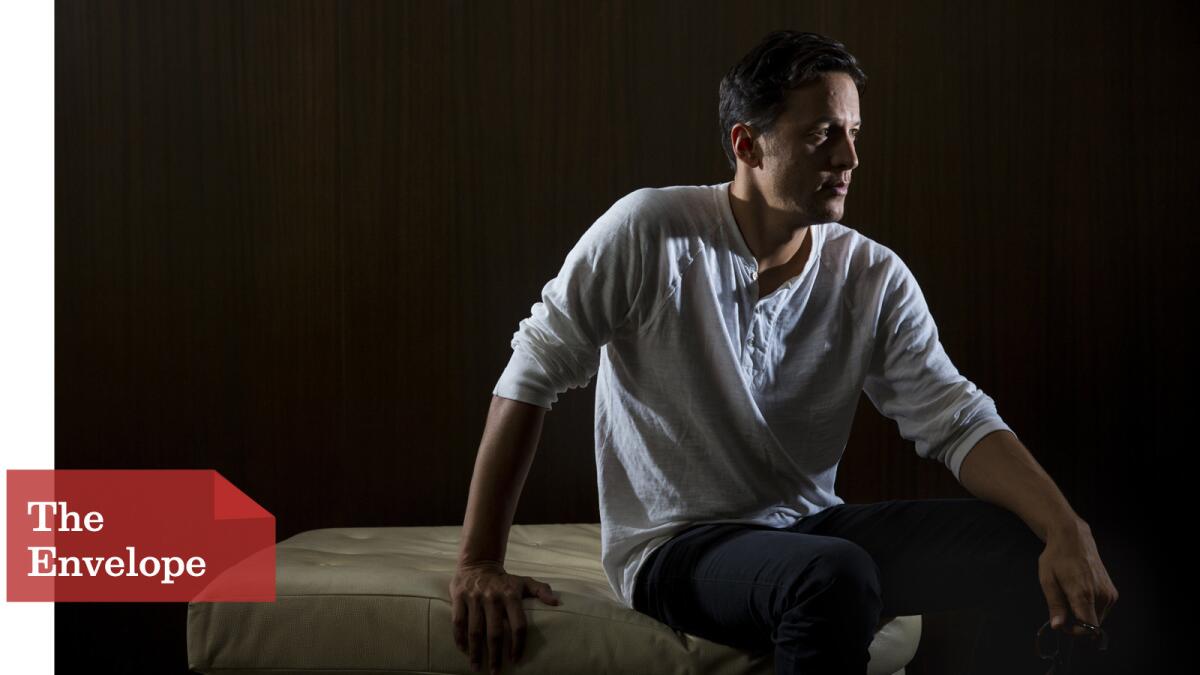The Envelope: Why Cary Fukunaga hid crew members and let the cameras roll on for ‘Beasts of No Nation’

Director Cary Fukunaga had included a treatment of a film about child soldiers in his film school application but struggled with a story for the topic until he read Uzodinma Iweala’s “Beasts of No Nation.”
It’s hard enough to get any movie made that doesn’t have masked heroes or a Roman numeral after it. So consider the prospect of making “Beasts of No Nation” — the story of a child soldier that is set in Africa and does not have a huge star attached. It had to be a true labor of love.
“Yeah, I don’t think we could have made it through it if there wasn’t some kind of attachment, it was so difficult,” says screenwriter-director-cinematographer Cary Fukunaga. “So, ‘labor,’ yeah,” he agrees, concerning the film that took a physical toll on its crew.
FULL COVERAGE: Golden Globes, Oscars and more
“Beasts” is now an award winner receiving rave reviews, and a contender for several nods at this year’s Oscars. Fukunaga is a red-hot name after the phenomenal success of the first season of HBO’s “True Detective,” but instead of choosing an easy gravy train, the director revisited an old passion to get a movie made about the gut-wrenching subject, shot on location in Ghana (with virtually no filmmaking infrastructure), and featuring, as the Oakland native says, “no white people.”
“I became interested in the topic when I was still an undergrad at university,” he says, citing geopolitical studies that introduced him to resource conflicts, especially in Africa. “I saw images of child soldiers there and it was shocking to me: the dead stare in their eyes, but still having the faces of children, holding these weapons.”
His 2001 film school application included a treatment of a feature about child soldiers in Sierra Leone. In 2003, after shooting a documentary for a friend in Guinea, “I hitched a ride to Freetown … that kicked off my first-person research. I’d done a lot of human-rights reports research before that, read books, accumulated a ton of material. But I still struggled with an idea for a feature.”
While Fukunaga was waiting for his white-knuckle feature debut, “Sin Nombre,” to go into production, a friend gave him Uzodinma Iweala’s novel, “Beasts of No Nation.” There, Fukunaga finally found his way in: “The voice of the child, the singular nature of the narrative.... All the other noise, the political context, the reasons for the war, all the other stuff filtered out — it was just this kid’s experience. It really got me.”
He wrote a draft and optioned it to a studio. It took only 10 or so years and another studio to get cameras rolling.
Fukunaga takes pains to extol the positives of shooting in Ghana, singling out the hard work and positive spirit of the people he met there, but admits, “It was a hard shoot on many levels, and that’s just the stuff we can remember. The stuff we can’t remember was probably even worse.
“People were getting run-down on the shoot. By Friday you could hardly get out of bed — the heat; it was very hard to replenish your protein, the calories you were losing. You sweat, you’re humping gear up and down the jungle hills. It was all hands on deck, no special treatment for the officers on this one. You could barely drink enough water in a day to make up for how much you were losing. I lost 20 pounds while I was there,” says the slender filmmaker, “and I don’t really have 20 pounds to lose. Our props guy got dysentery. Even our accountant got malaria, and he was in the office.”
Fukunaga served as his own director of photography, often operating the camera himself in a “360-degree shooting style” that immerses the viewer in his vision.
“I’m always trying to get rid of crew, whenever I can,” he says, laughing. “I love them, they’re essential to making the film, but there’s a freedom to moving everywhere on set. So we just banish everyone, as far away as possible, behind buildings, and just shoot long takes. Especially with non-actors, it was helpful to run long takes because they get swept up in the moment. It’s the hypnotism of the crowd.”
Netflix stepped in to finance the film, which stars Idris Elba and newcomer Abraham Attah, agreeing to give it a limited theatrical release on the day it began streaming on the site — it was especially limited because major cinema chains boycotted “Beasts” for violating the traditional 90-day window between theatrical and video availabilities.
“It was always going to be a struggle to get people to the cinema [to see the film], no matter what. I think having Netflix involved means more people are going to see it in the cinema” than in any number of specialty houses that might not have ever released the film. “And had they released it, they might have asked for changes. Who knows? ‘Less violent. Shorter running time.’ I know those are critiques about the film, but my editors and I, we sat there looking at this thing, saying, ‘How do we make it any shorter? How do we make it go faster?’
“No one asked those things of older films. It’s such a factor of today’s short-term viewing audience: Things have to be 90 minutes long or 110 minutes long, maximum. Some stories just require a few more steps, especially one as tricky as showing the transformation of a child into a killer.”
Follow The Times’ complete coverage of the Golden Globes and Oscars
More to Read
From the Oscars to the Emmys.
Get the Envelope newsletter for exclusive awards season coverage, behind-the-scenes stories from the Envelope podcast and columnist Glenn Whipp’s must-read analysis.
You may occasionally receive promotional content from the Los Angeles Times.











